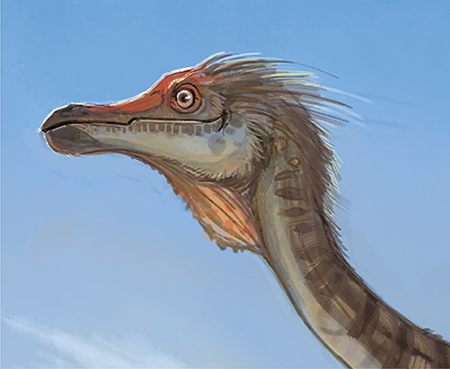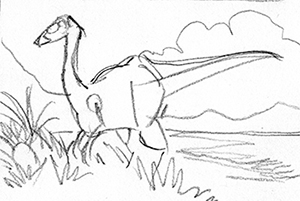
My goal for the gallimimus was to illustrate a large flock roaming across a wide plain. There would have been no rolling fields of grass like in today’s great plains. The scrubby evergreen ground cover and cycads would be home to insects, grubs, burrowing mammals, dinosaur eggs and small reptiles, an abundant food supply for the foraging gallimimus. The herd would likely have followed animal paths through the brush or dried riverbeds and washes, not unlike today’s animals. Similar to many bird species, it is possible that vast gatherings of migrating gallimimus would converge at breeding grounds to mate and lay eggs in nests before moving on.


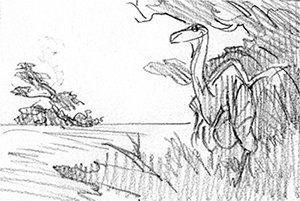
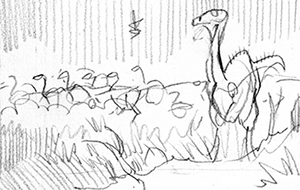
Working out the design and composition in quick thumbnail sketches is an essential first step to starting a drawing.
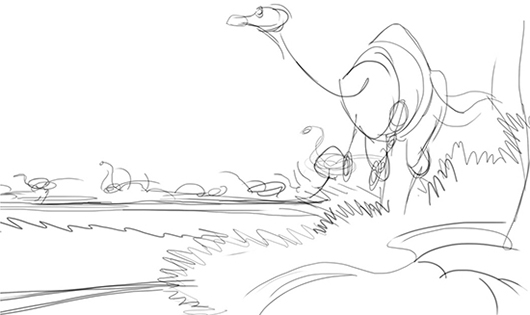
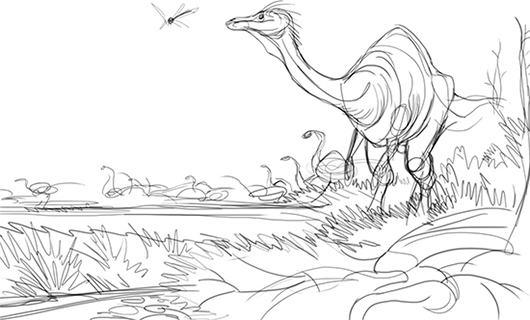
Loosely draw out your composition. This image was sketched in the computer using a drawing tablet and stylus with my thumbnails from my sketchbook as a guide. I added a dragonfly in the foreground that has attracted the gallimimus’ attention. This invertebrate evolved hundreds of millions of years ago and would make a nice tasty morsel to a hungry dinosaur.
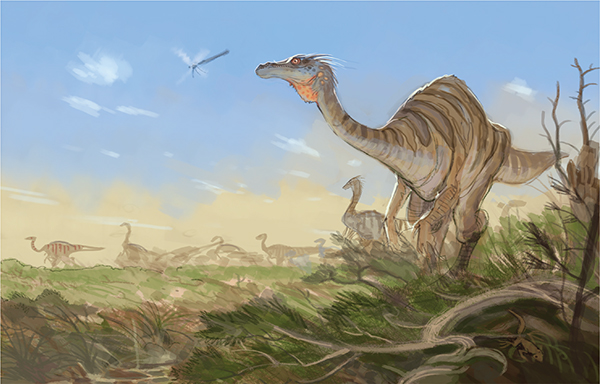
Using a variety of texture brushes and broad strokes, block in the basic forms of the image, trying to achieve an overall environmental effect rather than a detailed drawing. I want the scene to look hot and sunny in a wide open plain, the flock of gallimimus creating a dust cloud in the background.
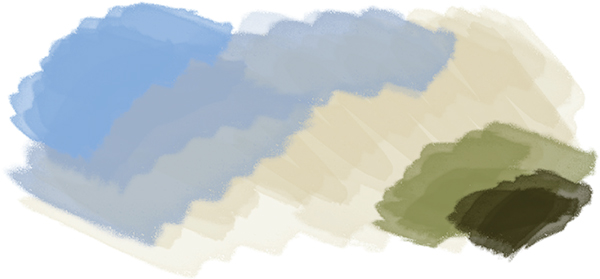
Color Palette
There are many digital painting programs out there and they each provide myriad default brush shapes with parameters you can alter. Experiment with the settings and build your own set of custom brushes.

I applied many variables to the brush tip shape such as Dual Brush, Scattering, Texture and Wet Edges to create this custom brush useful for tree bark and stone textures.

I named this fun custom brush “scribble-scrabble.” It is helpful for laying down a block of texture for brambles, grass or underbrush.
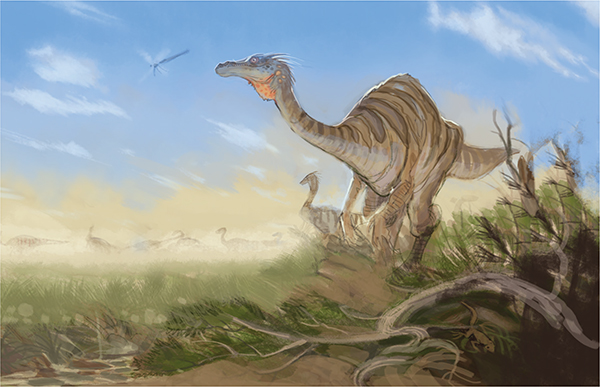
The scene of a gallimimus herd is a great opportunity to use the forced perspective technique between the background and foreground. In the hazy dusty distance, the flock of gallimimus creates visual space using atmospheric perspective between the different elements.
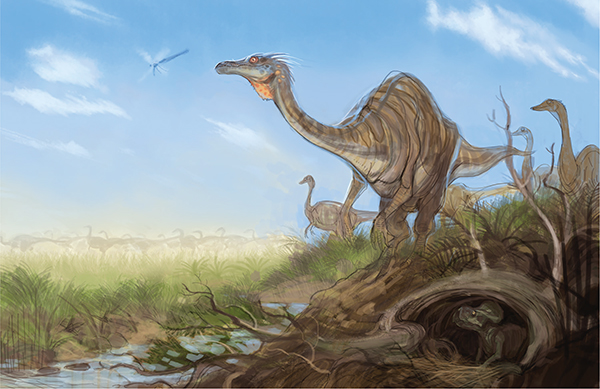
Moving toward the viewer the details become more focused and the main dinosaur subject in the central spotlight begins to occupy the focal point in the design. The addition of several middle ground gallimimus adds more depth, as well.
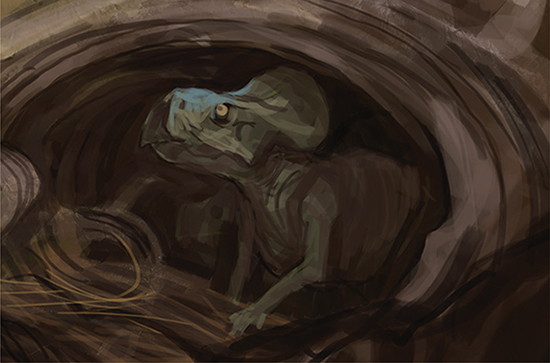
What began as a burrowed small lizard in the foreground of my initial sketches has evolved into a microceratus. At this stage you can still see the sketch lines and rough blocking of color.
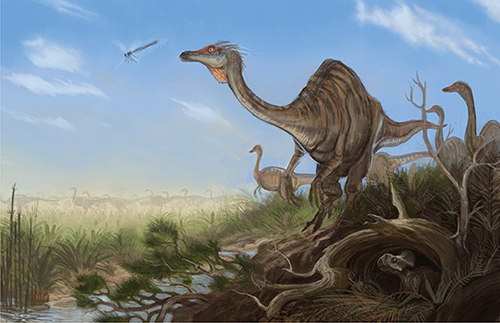
Moving into the foreground, add environmental details to create realistic texture that strongly contrasts against the smooth blue background. The small gully helps lead the viewer’s attention from our space into the picture space much like a pathway. A small creek like this in the desert would host an oasis of life. Reptiles, insects and every plant of the region would compete to be near the riverbank. I’ve included cycads, scrub evergreens, horsetails and palms. The strong vertical branch on the right helps the composition flow up out of the dark corner.
